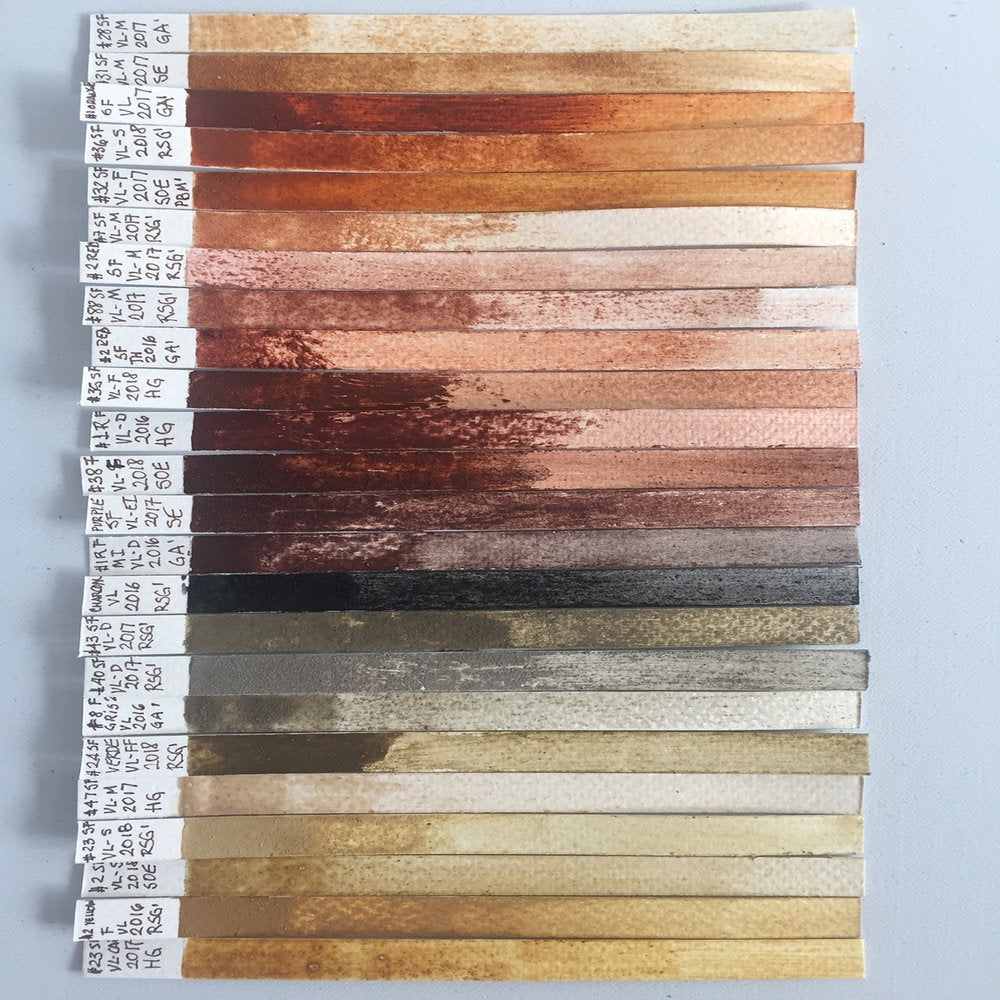Catalina Christensen, eco-artist and pigment collector from Columbia, shared her secrets on household hacks for pigment processing and paint making during the 2021 Pigments Revealed Symposium. We're sharing some of her insights here!
1. Improvisation is Perfectly Acceptable
When she was first inspired to process pigments while in the deserts of Columbia, Catalina didn't have access to traditional pigment processing tools. So, she improvised! No matter what anyone tells you, you don't always need the fanciest, newest equipment to get started with earth pigments. In fact, it's more eco-friendly to use what you already have.

2. Simpler Tools Help You Connect to the Earth
If you're using pigment processing tools that are small, uncomplicated, and easy to travel with, you can even process your pigments on-site when you find them. This practice, which Catalina loves, allows the artist to fully appreciate the origin of their materials as they begin to work with them.
3. Use What You Have at Home
Some of Catalina's favorite tools are a simple hammer, a few hard rocks, and a mortar and pestle for grinding her pigments at different stages of the process. Just be sure not to reuse any tools taken from the kitchen with food after using them for pigments!
4. Don't Be Afraid to Look Silly
One of Catalina's favorite tips for processing pigments indoors is to slip a sock over the top of her mortar and pestle before grinding the pigment; it looks a little goofy, but it keeps the dust out of your studio (and your lungs).

5. Patience is Key
Sieving is an important step in natural pigment processing so that you can ensure your pigment is the right size to mix with your binder. It may take several different sizes of sieves and multiple runs through, but the final product, smooth paints, are worth the wait. Catalina grinds her smallest pigments down to just 63 microns.
6. It's All About Resourcefulness
Catalina uses a large granite slab to mull her pigments on, and she sourced it from a fascinating location: not an artist's supply store, but a company selling building materials for kitchens! Her granite slab is actually the piece of granite cut out for a sink in a countertop, so she was able to get it for fairly cheap. She also uses antique irons for the final grind on her pigments once they're almost ready to use.

7. Last but not Least, Safety Comes First
As an artist with extensive experience working with pigments, Catalina knows the importance of safety in the studio. She always uses a mask when working with dry pigments, because she knows that any dust, no matter the source or compostion, can be harmful to your lungs.

About Catalina
"Throughout her career, Catalina has been fascinated with experimentation and the alchemy of materials. Three years ago, she took the decision to make her practice as environmentally neutral as possible, following her ecological concerns. This inspired her to use egg tempera and natural materials. Life in her studio reveals a complex and unusual practice; the elaboration of pigments leading to the creation of paintings and 3D objects.
Currently, Catalina uses natural rock pigments collected in Colombia and processed in her studio, as well as indigo dye and metal powders to create new pigments. Her singular style is the ever-evolving product of her experimental nature.

For Catalina, the collection and preparation of the pigments is an artistic endeavour in itself, and therefore she includes them in her exhibitions. She is in the process of creating a comprehensive pigment collection that comprises her own pigments, donations, exchanges with other artists and purchased pigments" (source).
Check out her work on her website, catalinachristensen.com.
Interested in learning more about Natural Earth Paint artists? Visit our Eco Artists page!
Follow us on Instagram, Facebook, and Pinterest for more natural inspiration.





